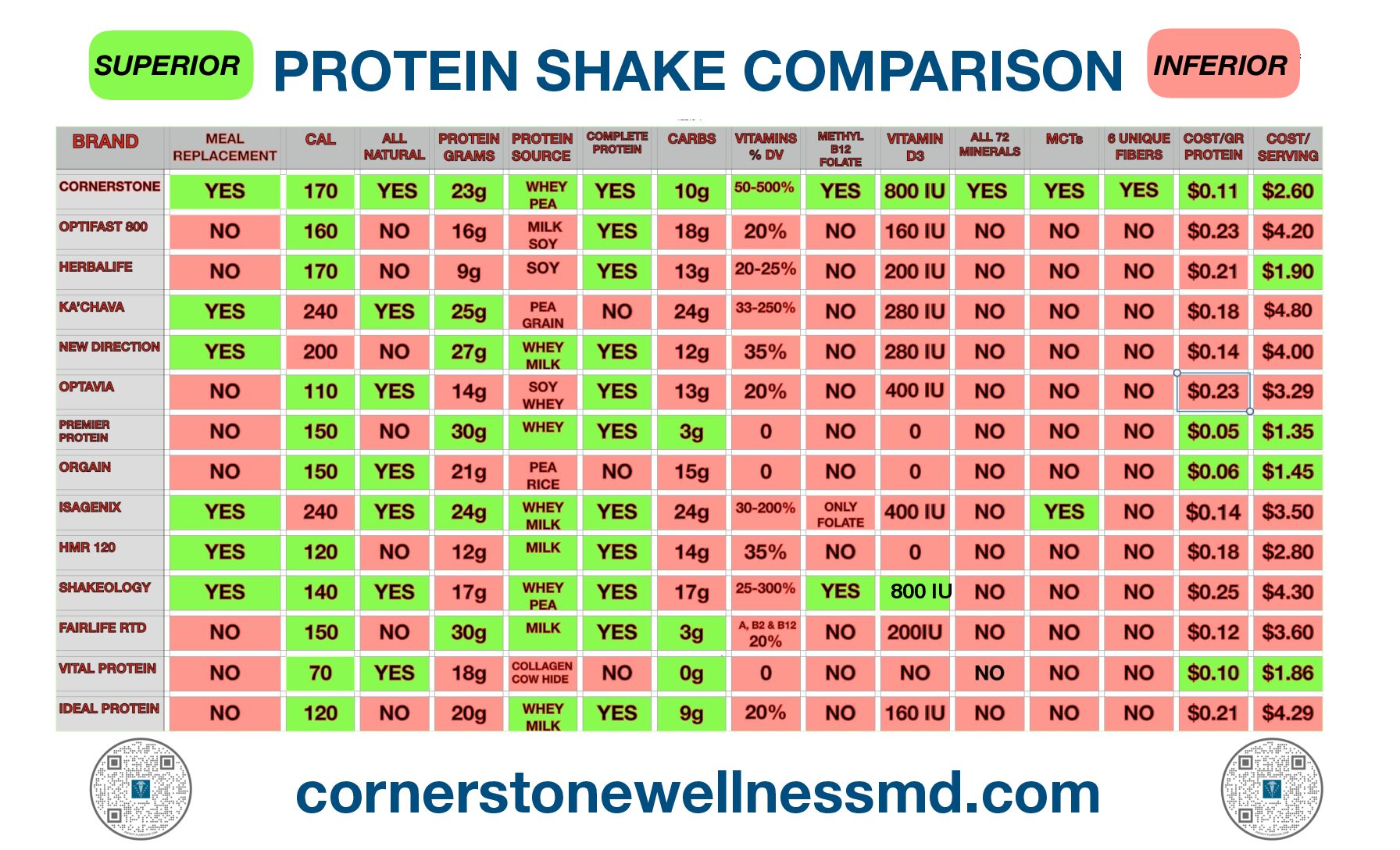Why Diets Fail and What Can Be Done About It
It is a well documented fact that over 95% of people who diet end up gaining their weight back within a couple of years. Obviously there are a lot of reasons for this. Perhaps the most important reason goes to the very concept of “dieting”. Unfortunately, most dieters change their caloric intake (often drastically) for a certain period of time but then when their diet is “over” they simply return to their previous eating habits. This makes no sense and goes to the oft-quoted definition of insanity “doing something over and over and expecting a different outcome”. Short term weight loss, while perhaps satisfying a New Year’s resolution, preparing for a cruise or a wedding or High School reunion doesn’t really change health risk factors to any significant degree. The later requires a long term change not so much in terms of weight but in terms of body fat levels.

Weight bearing joints (hips, knees, ankles, feet) care about body weight but every other illness related to “overweight” is due to excess body fat, not weight. Excess body fat increases insulin levels, which leads to hypertension, elevated LDL and triglycerides, diabetes, heart disease and even some cancers. The diseases of industrialized nations are due to excess inflammation and fat cells that are packed with fat produce inflammatory substances.
One of the pitfalls of losing weight instead of focusing on body fat is that it leads to a drop in metabolic rate (BMR) since BMR is almost completely determined by lean body mass (LBM) or muscle. Weight loss without maintenance of muscle lowers BMR so more calories are stored (as fat) instead of burned for energy. This of course will lead to cycling, or yo-yoing essentially setting people up for a vicious cycle of dieting for a weight goal, losing muscle, dropping BMR, storing more calories as fat and then simply repeating this cycle.
The importance of body fat and lean body mass has been established as more vital than weight or BMI. I consider body fat % to be the 5th vital sign after temperature, blood pressure, pulse and respiratory rate. Reducing excess body fat is more important from the standpoint of disease prevention and quality of life than any other vital sign.

Cornerstone Wellness created the first articial intelligence based algortihm based on hundreds of DEXA tests, which is considered the gold standard for measuring body fat. Its accuracy really shines as one gets into the higher BMIs, where most other bioimpedance devices start to falter. It is also hand held and connects to the Internet so patients and medical weight loss physicians can follow the results online. The data can be utilitzed with a the meal planning program so that patients’ meal plans are customized according to their BMR, as it should be, instead of one-size-fits-all like the older, less cutting edge approaches that put all patients, regardless of size, on a standard caloric intake.
Protein, Carbohydrates and Calories – A Juggling Act
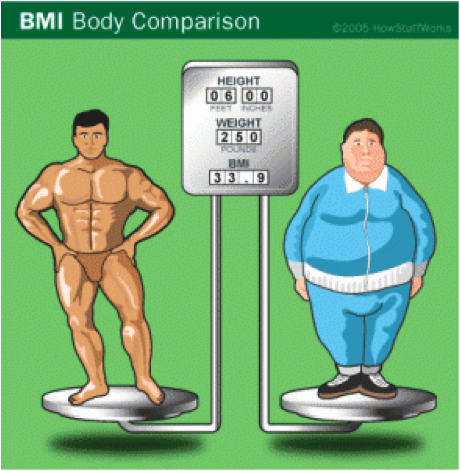 Now that body fat, BMR and calories can be determined, it allows custom individual diet plans to be engaged. The goal again is not weight loss, it is fat loss with maintenance of muscle and BMR. The results of this approach by medical weight loss physicians that utilize the Cornerstone Wellness program are constantly evaluated by frequent follow up testing to make sure values are moving in the right direction. Many patients are so determined to lower their weight, they literally don’t eat as much as is recommended which can result in loss of muscle and BMR. Likewise, we have patients who may have lost a few pounds but they drop several dress or pant sizes due to gains of muscle with loss of body fat.
Now that body fat, BMR and calories can be determined, it allows custom individual diet plans to be engaged. The goal again is not weight loss, it is fat loss with maintenance of muscle and BMR. The results of this approach by medical weight loss physicians that utilize the Cornerstone Wellness program are constantly evaluated by frequent follow up testing to make sure values are moving in the right direction. Many patients are so determined to lower their weight, they literally don’t eat as much as is recommended which can result in loss of muscle and BMR. Likewise, we have patients who may have lost a few pounds but they drop several dress or pant sizes due to gains of muscle with loss of body fat.
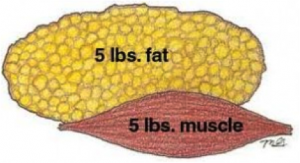
When not enough calories are consumed, physiologic survival mechanisms (starvation mode) result in a lowering of metabolic rate. This is why mild to moderate caloric restriction diets (like Cornerstone) have been shown to result in better long term results than very low calorie diets or” VLCDs”. STARVATION HAS NO PLACE IN DIETING!!! It is completely counterproductive, dangerous and flies in the face of medical science.
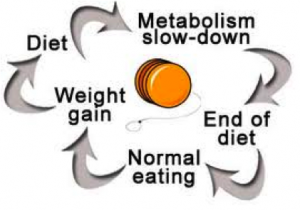 Once LBM and BMR is determined by the Cornerstone BC IV, the patient is put on a calorie intake equal to their BMR minus 10% of their BMR. A 200 lb man, with a BMR of 2000 calories is actually burning about 2700 calories a day when one includes all their activities of daily living, even more if he is exercising. So when he is put on the Cornerstone program he would be eating 1800 calories/day (2000-200), which actually represents a reduction by 33% of what he was eating before (2700 cal). If he were put on a typical “very low calorie diet” like Optifast or Medifast of 800-1200 cal/day he would be reducing his calories by as much as 70%.
Once LBM and BMR is determined by the Cornerstone BC IV, the patient is put on a calorie intake equal to their BMR minus 10% of their BMR. A 200 lb man, with a BMR of 2000 calories is actually burning about 2700 calories a day when one includes all their activities of daily living, even more if he is exercising. So when he is put on the Cornerstone program he would be eating 1800 calories/day (2000-200), which actually represents a reduction by 33% of what he was eating before (2700 cal). If he were put on a typical “very low calorie diet” like Optifast or Medifast of 800-1200 cal/day he would be reducing his calories by as much as 70%.
Not only is this degree of caloric restriction not necessary, it is potentially dangerous, makes people miserable and is counter to modern principles of metabolism and physiology.
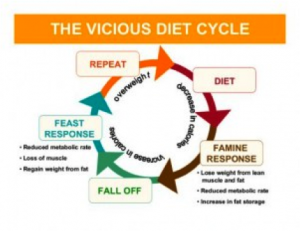 Macronutrient (protein, carbohydrate and fat) proportions are set initially at 35%-35%-30% respectively. Compared to what most people consume this represents a marked increase in protein and reduction in carbohydrate. This conveniently gets most patients up to the 1.4-1.5 grams of protein per kg of body mass, which is necessary for maintenance of muscle with loss of body fat. By maintaining muscle while losing primarily fat, the metabolic rate is maintained so there will be no likelihood of cycling or yo-yoing.
Macronutrient (protein, carbohydrate and fat) proportions are set initially at 35%-35%-30% respectively. Compared to what most people consume this represents a marked increase in protein and reduction in carbohydrate. This conveniently gets most patients up to the 1.4-1.5 grams of protein per kg of body mass, which is necessary for maintenance of muscle with loss of body fat. By maintaining muscle while losing primarily fat, the metabolic rate is maintained so there will be no likelihood of cycling or yo-yoing.
The patients notice the changes in the mirror and in the looseness of their clothes since almost all the fat loss is from the abdominal area. Most importantly, metabolic co-morbidities like hypertension, hyperlipidemia, insulin resistance and diabetes improve more rapidly than one would expect with weight loss alone.






